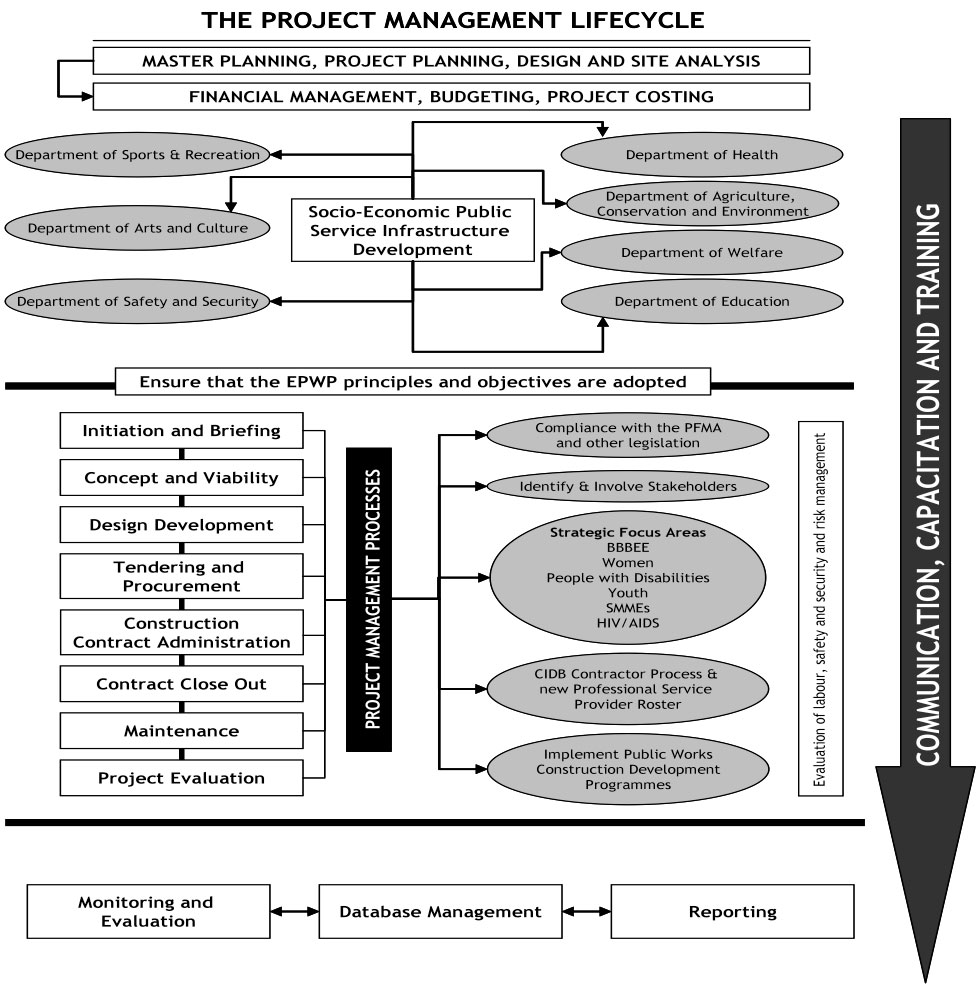Strategic focus on construction
Growth and the evolving national development agenda require a comprehensive response from stakeholders and from an industry that emerges from a low capacity base after decades of declining investment.
The industry is challenged to grow and deliver, to improve its performance and capacity, and to achieve empowerment objectives.
The Construction Industry Status Report 2004, which was prepared by the Construction Industry Development Board (CIDB) with inputs from a strategic review group, identified the following principal goals for industry development:
- Ensure a total capability in South Africa to meet the built environment needs for development of a whole society.
- Ensure that the construction industry in its broadest definition offers access into the mainstream economy for those sectors of society disadvantaged by the policies of apartheid and the forces of colonialism.
- Ensure a competitive construction industry that meets global standards of performance in terms of quality, productivity, safety, health and the environment.
This section of the Strategic Agenda for Public Works in Gauteng1 essentially refers to how to incorporate the identified target group into the operational aspects of the public infrastructure service delivery process. This can, for example, relate to the various quotas for women in the procurement process. A second type of programme relates to identified intervention strategies and programmes for an identified target group. An example of this is making all Gauteng’s buildings accessible to persons with disabilities.
It should be noted that strategic intervention areas have both an internal and external side as public service infrastructure delivery and the project management lifecycle involving the widest range of stakeholders. Internal government transformation2 alongside change management of the external construction industry role-players will only be sustainable if they are done collectively and with the same agenda:
- Incubator industries for people that require sheltered employment;
- Implementation of on-site construction contact centres that will provide project management and financial management resources for emerging contractors and professional service providers;
- Learnership programmes that are either integrated into the education environment or have a relationship with private sector companies;
- Youth training and mentorship through either bursaries for exceptional students who will then need to be in government employ for an identified period of time, or through a mentorship programme for staff and vacation students in the various construction fields;
- The viability and growth of SMMEs being supported through preferential procurement, and also through the provision of support to these entities by agencies and mechanisms such as the Gauteng Propeller Agency.
- HIV/Aids strategies, which will primarily be addressed on an internal level through:
- Managing disclosures
- Training supervisors and managers on legal aspects of managing HIV/Aids in the workplace
- Information sessions on rights of employees living with HIV
- Benchmarking with the private sector on an ongoing basis
- Awareness programmes with stakeholders and ensuring that contracts and tenders sensitively address HIV/Aids in the workplace.
- The emerging contractor development programme, which focuses on level 1 to 4 CIDB contractors and provides specific working opportunities within the bounds of government; and
- Transformation of supply chain management processes and practices to incorporate all of the BBBEE (broad-based black economic empowerment) requirements, especially in relation to consultants, contractors, artisans and professional service providers.
Project management
Each of the strategic focus areas, as well as the construction development programmes, was to be addressed within the context of the project management lifecycle, as detailed in the diagram below.
Within the construction industry, especially in relation to the public infrastructure delivery sector, the project management lifecycle is applicable and intricate to the day-to-day operations. The Strategic Agenda for Public Works in Gauteng focused on each of the identified stages in the project management lifecycle, along with the interrelationships.
One of the most important issues to consider, which had not taken place then, is that of providing expert advice and strategic, integrated planning to client departments and end users before projects are identified and budgets are allocated. There is still a need (I believe) to ensure comprehensive, strategic planning and management through intra- and inter-departmental interaction and long-term needs assessments.
One of the challenges facing public works processes in general in achieving transformation and sustainable service delivery is the development of a more efficient and effective approach to financing, procurement, and the construction and maintenance of public infrastructure.
The way in which socio-economic infrastructure is managed is directly related to how the government and the industry manage growth and the quality of services delivered. There is a need to identify and plan long term for integrated socio-economic infrastructure investment in a manner that achieves optimal efficiencies in the development, use and maintenance of the said infrastructure.

Socio-economic infrastructure development must ensure maximum return on investment for ratepayers and users, as well as address the identified needs as stipulated in the long-term planning agendas of the client departments. It must ensure the optimal utilisation of existing and new socio-economic infrastructure, as well as protect existing public assets in the most financially sustainable manner.
Effective management of institutions, systems and processes includes the development of appropriate financing and procurement models, and ensuring the participation and representation of institutions, agencies, contractors and professional service providers as reflected in South Africa.
The models and approaches used must therefore increase the opportunities for more direct and meaningful black economic empowerment, and SMME participation in particular.
1. This discussion is an extract from the documents titled "Gauteng Infrastructure Renewal and Investment Plan" that was still at "work-inprogress" stage by the time I left the department.
2. This is the overall approach that guided my work in the Gauteng Department of Public Transport, Roads and Works.